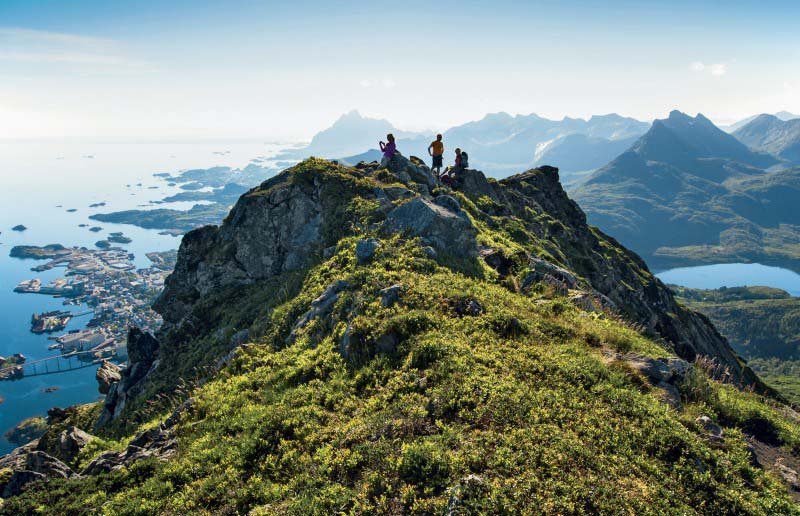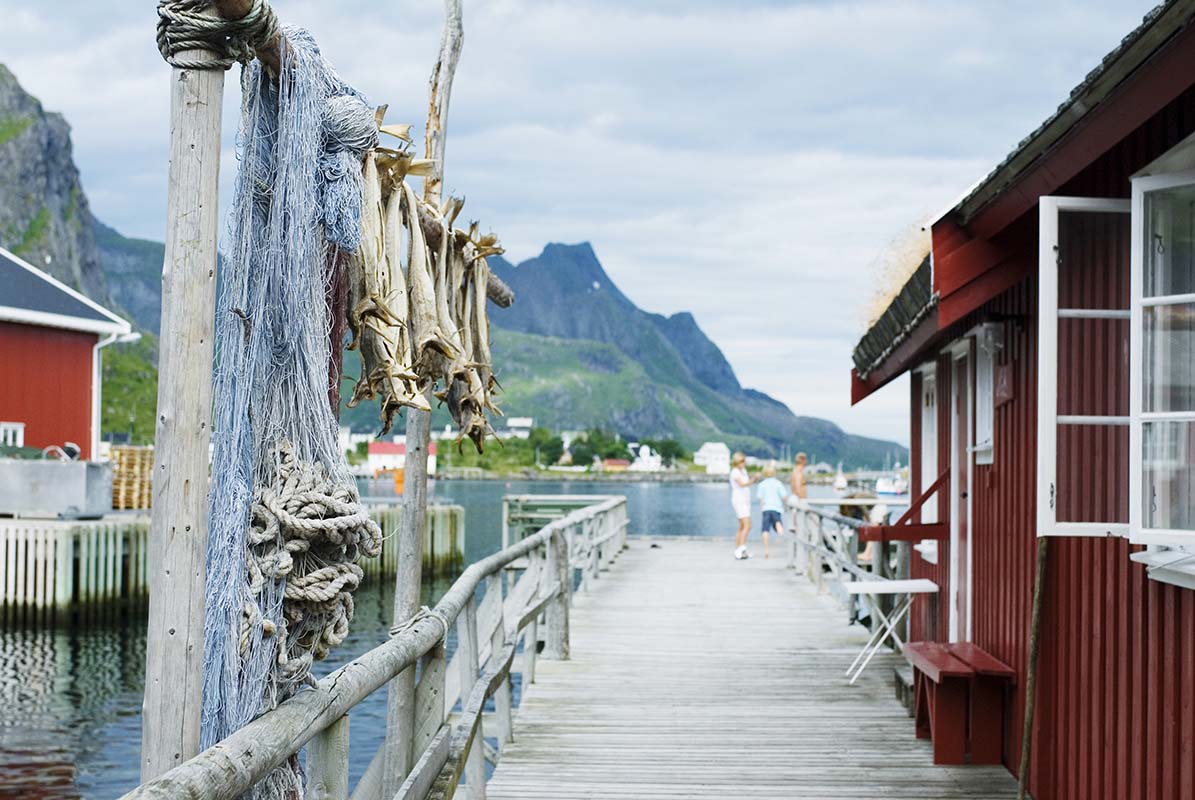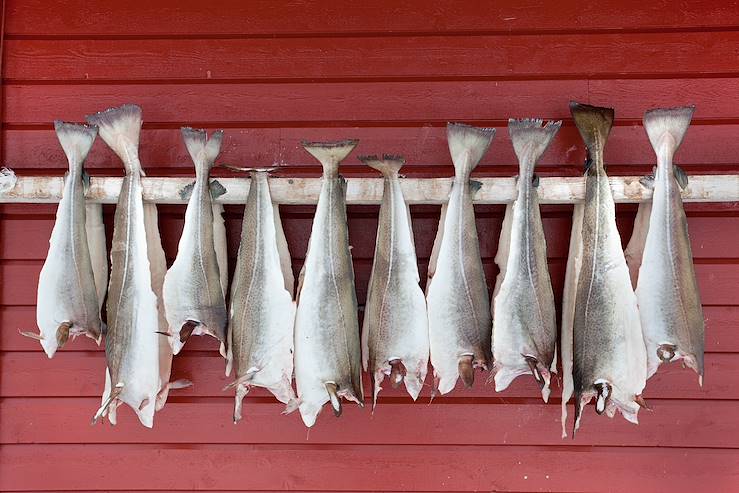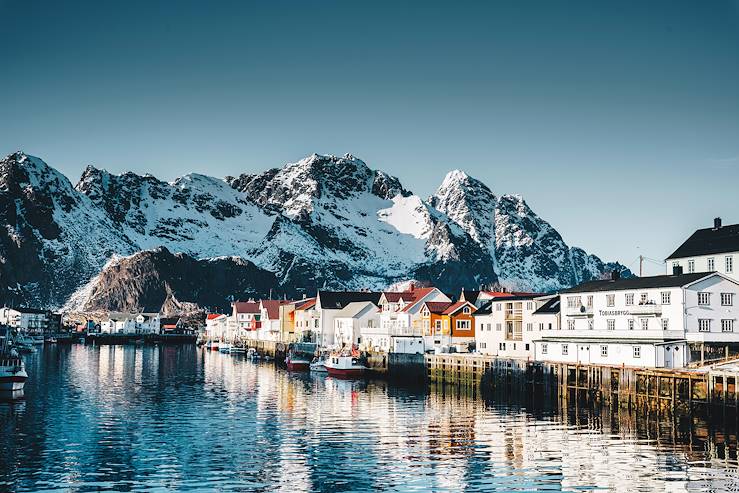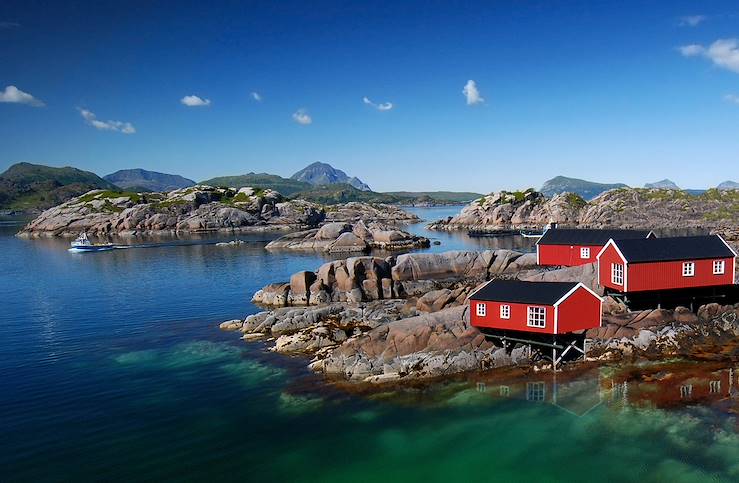What can you find in the Lofoton Islands that you won't find elsewhere?
Savour a breathtaking feast for your eyes with wild landscape and unexpected adventures at every turn. Imagine startling scenery with sparkling fjords, green meadows that bloom in the sun, fishing villages huddled together on stilts at the mercy of Mother Nature, crystal waters of darting fish and flocks of sheep that freely roam from beach to field. Expect a wild adventure here and a holiday you'll remember for a lifetime. As for the villages themselves, each has its own idiosyncratic attractions, and the ones not to miss are Svolvaer, the busiest (a very relative term in this neck of the woods) settlement in Lofoten; Storvagan for its Lofoten Museum and aquarium, and Henningsvaer for the hipster haven of Kaviarfactory, an exhibition space and shop. On the way back to the airport it's also worth stopping off at the Viking Museum in Borg to see a reconstructed Viking longhouse near the site of the largest ever discovered, with an excellent exhibition about the Viking way of life and their extraordinary voyages from their Scandinavian heartlands. Seeing Lofoten in summer it's amazing to think they ever wanted to leave somewhere so beautiful.
Who are Lofoton Islands holidays best for?
With its dazzling natural sights that provide photo opportunities at every turn, Lofoten is a photographer's dream and has already gained Insta-fame for its untamed majesty. Nature lovers will jump at the chance to see the islands' animal offerings: encounter moose and otters on land and from the sea, spot whales and - if you're lucky - the White-tailed Eagle. Meanwhile, if a get-up-and-go holiday is your thing, there are active activities galore from hiking and kayaking, to snorkelling and horse riding.
The best ways to discover the Lofoten Islands:
The ideal Lofoten trip would involve picking up a car from Narvik Airport and enjoying the winding road across the bridges and through the tunnels linking the islands until you reach the western tip of the last one, Flakstadøy, stopping regularly to scrape your jaw off the floor at the unbelievable beauty of the landscape. After a day's sailing or hiking, arrive in a village and make yourself at home in a traditional stilted fisherman's house at the water's edge. Soak up the sleepy village atmosphere and marvel at the splendour of the surrounding nature while you experience Lofoten as a local. Another option is to combine a short stay in Lofoten with a mini cruise to dive deep into the nature, wildlife and landscapes of this wonderful region.
Special things to do in the Lofoten Islands:
- You'd be forgiven for thinking there's magic in the skies of Lofoten - depending on the time of year you visit, you'll be treated to a different celestial wonder if you look up. Best viewed between September and March are the Northern Lights; brave the cold and watch as the sky dances with colour before your eyes. Visit between May and July and you'll witness the natural phenomenon of the midnight sun, where the sun doesn't set and the boundaries between day and night are blurred. Watch as a dreamy orange glow is cast across the landscape and fight the urge to do nothing but point your viewfinder at it for 24 hours a day.
- The good news is that it's also possible to interact with the surroundings rather than just view them. Try your hand at trekking on the region's network of well-marked walking routes, climbing up to some of the more accessible peaks for incredible panoramic photo opportunities.
- Back down at sea level you should take the chance to explore the sea itself, because it was the Gulf Stream-warmed waters surrounding the archipelago that attracted vast shoals of cod, which in turn lured the islands' long established fishing communities. In many of the picturesque fishing villages along the way we can arrange sea kayaking or inflatable rib-boat expeditions to explore remote coves and hopefully catch site of some of the region's resident wildlife, including majestic fish eagles and sperm whales.
- It's also in these little fishing villages that Lofoten plays another trump card, the extremely original (something we're rather partial to) places to stay known as rorbuers. These little wooden huts were traditionally - and in many places still are - used for storing fishing nets and equipment and some have been converted into charming and quirky accommodation.


